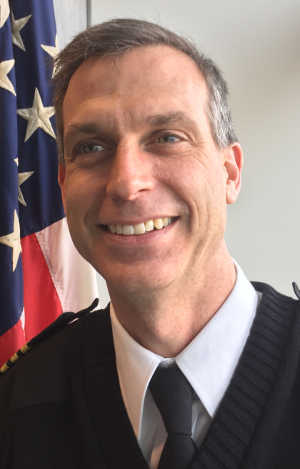- Pastor Chris DelCol
The Lenten Season: Living in grace by taking up your cross
Saint Mark writes, “"If anyone would come after me, let him deny himself and take up his cross and follow me. 35 For whoever would save his life will lose it, but whoever loses his life for my sake and the gospel's will save it.”
Many songs have been written about the need to carry your cross and the reason is quite simple – in order to live each day in God’s Grace, we must carry our cross every day.
One of those songs is performed by Ray Boltz and the words go like this, “Take up your cross, and follow Jesus. Take up your cross every day. Don't be ashamed to say that you know Him, so, count the cost, then take up your cross and follow Him.”
And then the song presents us with questions that we need to answer as we carry our cross: “What are you doing for the King? Have you given everything for the one Who gave His all for you? Don't be satisfied just to know that the Lord has saved your soul. Have you forgotten what you need to do? I know sometimes the road is long, and sometimes you feel like you can't go on, but just go on and carry your cross, and follow Him.”
The reality of those words put us face to face with the challenges we will see when we take up our cross.
Crosses are heavy sometimes … and maybe we need a little help to carry them, but comfort comes when Jesus says in Matthew 11:29-30, “Take my yoke upon you, and learn from me, for I am gentle and lowly in heart, and you will find rest for your souls. For my yoke is easy, and my burden is light."
Those are comforting words when we face the reality of the need to take up our cross, for as we do, the cross becomes easier to bear and the burden is lightened.
So, what does it really mean to carry your cross? And what does a cross look like for us? Is it made out of wood like the one Jesus carried through Jerusalem and was eventually nailed to and died on for our sin?
That was a real heavy one, one that few would ever want to carry. But the cross we must bear on Jesus’ behalf here in Lake County and beyond is very heavy!
As we look around us throughout Lake County, we see poverty beyond belief, we see drug and alcohol abuse, we see homelessness, mental illness, unemployment, crime, kids who need direction but are often getting it from the wrong places and end up doing the wrong thing, and we see a desperate need for people to hear and experience the Good News of Jesus Christ, the very Gospel of sin forgiven and eternal salvation.
Lake County is in need of more people who are willing to take up their cross and make a difference here.
What must we do?
Simply, identify the challenges here in Lake County (which most of us already know) and working collectively, church and state and every social support group out there, to address the issues we face.
Things like low-cost housing to help with the homeless situation, youth programs, developing employment opportunities, the need for counselling for those with family and/or mental illness problems, drug and alcohol abuse, and most important of all, getting folks involved with others to make this community a place we can stand up and boldly say, “I live in Lake County and I am very proud to be here.”
Taking up your cross means doing what Jesus would expect us to do here in Lake County for the sake of His kingdom on earth.
Our task is not insurmountable if we work together to accomplish the goal. That is what we will focus on this Sunday, “How to live in Grace by taking up your cross right here in Lake County.”
Please join us this Sunday and every Sunday at First Lutheran Church for Bible study at 9:30 a.m., worship at 11 a.m. and a hot lunch immediately following worship.
Our food cupboard is offered every third Sunday of the month from 1 to 2 p.m.
First Lutheran Church is located at 3863 Country Club Drive in Lucerne.
All are welcome so please, come as you are as we reach out to this community and beyond to spread the healing Word of the Gospel.
Chris DelCol is pastor of First Lutheran Church in Lucerne, Calif. The church is located at 3863 Country Club Drive, telephone 707-274-5572.



 How to resolve AdBlock issue?
How to resolve AdBlock issue? 



